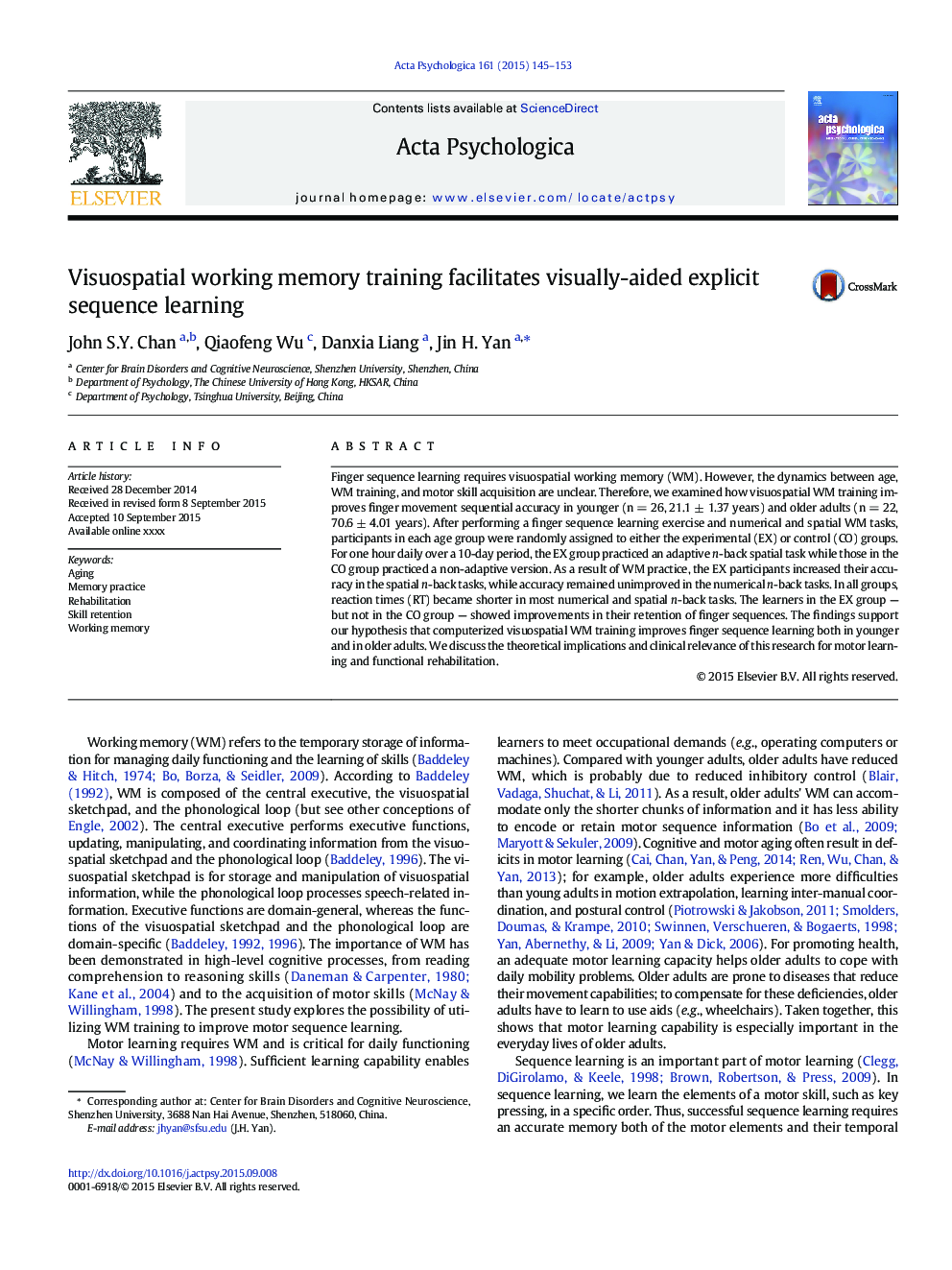| Article ID | Journal | Published Year | Pages | File Type |
|---|---|---|---|---|
| 7277260 | Acta Psychologica | 2015 | 9 Pages |
Abstract
Finger sequence learning requires visuospatial working memory (WM). However, the dynamics between age, WM training, and motor skill acquisition are unclear. Therefore, we examined how visuospatial WM training improves finger movement sequential accuracy in younger (n = 26, 21.1 ± 1.37 years) and older adults (n = 22, 70.6 ± 4.01 years). After performing a finger sequence learning exercise and numerical and spatial WM tasks, participants in each age group were randomly assigned to either the experimental (EX) or control (CO) groups. For one hour daily over a 10-day period, the EX group practiced an adaptive n-back spatial task while those in the CO group practiced a non-adaptive version. As a result of WM practice, the EX participants increased their accuracy in the spatial n-back tasks, while accuracy remained unimproved in the numerical n-back tasks. In all groups, reaction times (RT) became shorter in most numerical and spatial n-back tasks. The learners in the EX group - but not in the CO group - showed improvements in their retention of finger sequences. The findings support our hypothesis that computerized visuospatial WM training improves finger sequence learning both in younger and in older adults. We discuss the theoretical implications and clinical relevance of this research for motor learning and functional rehabilitation.
Related Topics
Life Sciences
Neuroscience
Cognitive Neuroscience
Authors
John S.Y. Chan, Qiaofeng Wu, Danxia Liang, Jin H. Yan,
